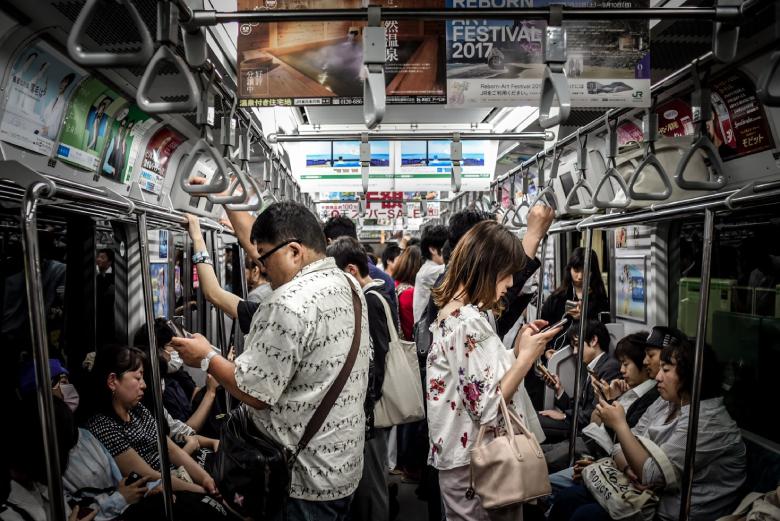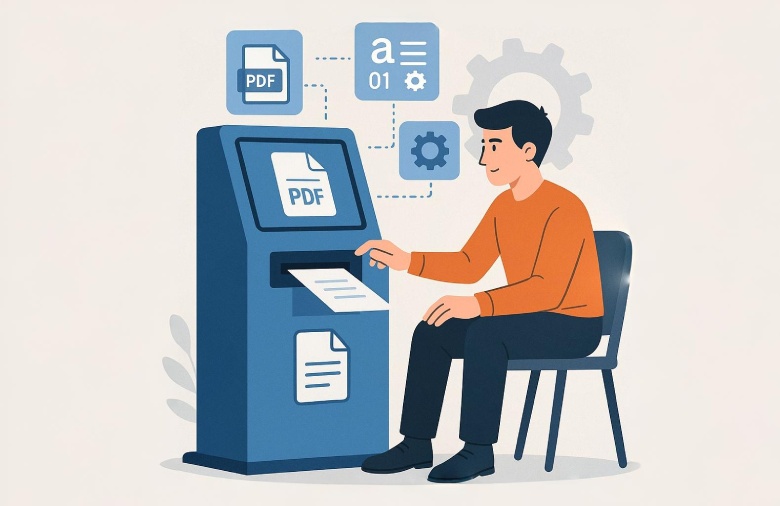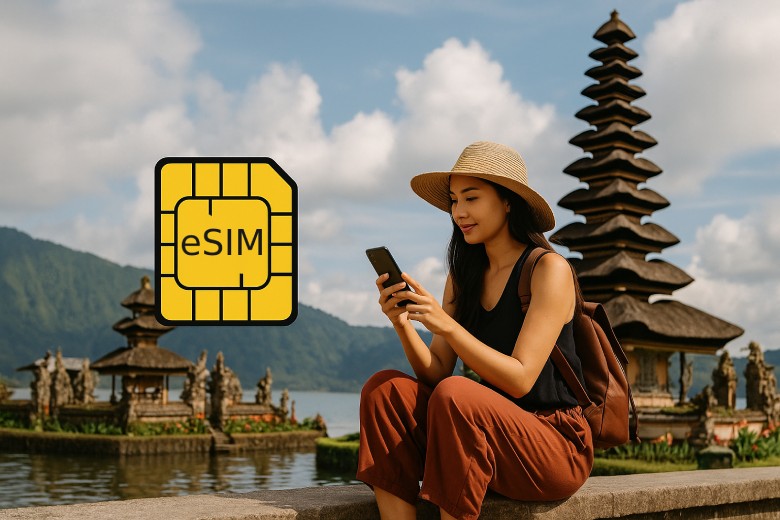
Programmatic Advertising for Getting More People to Use Your Launched Apps
In today's hyper-connected, mobile-first landscape, businesses face pressure to create apps for their services. For instance, if your business is a travel agency offering tours and experiences, you want an app that can make it easier for your traveler customers to find the best tour options.
But creating apps does not happen overnight. It takes knowledge, expertise, and skill for you to build a fully functional app. Then again, even after you've launched your app, there lies the challenge of getting noticed—and downloaded. With millions of apps competing for attention on platforms like Google Play and the App Store, developers need a more innovative, faster, and more scalable way to reach users.
Is there a way? There is a way. Have you ever tried programmatic advertising to promote your app? In a nutshell, programmatic advertising is a data-driven approach that can reshape how developers acquire users and build lasting brand awareness.
Whether you're an indie developer or part of a seasoned product team, understanding how to harness programmatic advertising can make the difference between getting lost in the shuffle or landing on users' home screens.
Therefore, let’s embark on a journey into the power of programmatic advertising, examining its core benefits, top strategies for app growth, and how modern tools can streamline every step of the acquisition process.
Your Orientation on Programmatic Advertising
At its core, programmatic advertising refers to the automated buying and selling of digital ads using sophisticated algorithms and real-time bidding (RTB). Rather than negotiating ad placements manually, programmatic platforms use AI and machine learning to purchase ad inventory across websites, apps, streaming services, and social platforms in milliseconds.
What Are Its Key Components?
Here are the key components of programmatic advertising with examples to help you understand better:
1. DSPs (Demand-Side Platforms)
Demand-side platforms (DSPs) allow advertisers to buy digital ad impressions across multiple websites automatically. They use data to bid in real-time for ad space that matches their target audience.
For example, Google's DV360 helps brands like Nike buy inventory across apps, websites, and YouTube through a single interface.
2. SSPs (Supply-Side Platforms)
Supply-Side Platforms enable publishers to manage, sell, and optimize their ad inventory. SSPs maximize revenue by connecting with multiple DSPs.
Here's an example: Magnite helps media companies, such as The Weather Channel, sell ad space programmatically, ensuring high fill rates and competitive pricing through automated bidding.
3. DMPs (Data Management Platforms)
DMPs collect and analyze audience data from multiple sources to create detailed user segments. These segments are then used to improve ad targeting.
Example: Oracle BlueKai helps brands like Ford target specific user groups like SUV intenders—based on browsing behavior, location, and demographics.
4. Ad Exchanges
The easiest to understand, ad Exchanges are digital marketplaces where SSPs and DSPs connect to buy and sell ad inventory in real time. They operate on a bidding system to determine pricing.
For instance, OpenX facilitates transactions between sites like USA Today and advertisers, enabling relevant ads to be shown to the right users instantly.
Although ad exchanges are the easiest to comprehend, it is essential to optimize these components so they are integrated into your programmatic advertising campaigns. Up next: the power of programmatic ads for apps.
The Power of Programmatic Ads for Apps
Mobile app marketing is uniquely suited to programmatic advertising for several reasons:
1. Precision Targeting
Programmatic platforms tap into a wealth of behavioral and contextual data, allowing you to serve ads to high-intent users who are most likely to install and engage with your app. You can target by:
-
App usage patterns
-
OS and device
-
In-app purchase behavior
-
Time of day
-
Location
-
Lookalike audiences
2. Scalability and Speed
With automation at its core, programmatic enables campaigns to scale quickly across platforms and devices without the delays associated with manual ad buying. Developers can launch, pause, or adjust campaigns on the fly based on performance data.
3. Cost-Efficiency
Through real-time bidding, you only pay for impressions that meet your criteria. This makes your ad spend more effective, especially when optimizing for installs or in-app events using performance-based models, such as CPI (cost-per-install) or CPA (cost-per-action).
4. Cross-Platform Reach
Whether your target users are watching YouTube on their smart TV, scrolling Instagram on their phone, or reading news on a tablet, programmatic can follow and engage them across all touchpoints.
5. Real-Time Optimization
Programmatic advertising enables continuous, data-driven optimization throughout a campaign's lifecycle. Machine learning algorithms analyze user interactions and adjust bids, creative elements, and targeting parameters in real time to maximize results. For example, if a particular ad drives more installs on Android devices in the evening, the system reallocates budget accordingly, boosting performance without manual intervention.
However, to realize those benefits, it is crucial that you follow a strict set of guidelines and steps to carry out strategies correctly. Read on.
Steps and Strategies for Maximizing Programmatic Advertising for App User Acquisition
According to VentureBeat, citing gaming apps as examples, these apps spent a whopping $29 billion to acquire users in 2023, and this money is substantial. But, do you really have to spend so much on user acquisition? Programmatic advertising is a method for acquiring a considerable number of users without incurring significant investment. Here's how:
Step 1: Audience Segmentation and Lookalike Modeling
Start by analyzing your existing user base: what behaviors do your best users share? With this information, you can build lookalike audiences—clusters of new users who match the profile of your top converters. Platforms like Meta Ads and Google's DV360 offer powerful modeling tools.
Step 2: Creative Personalization at Scale
Programmatic platforms enable dynamic creative optimization (DCO), allowing for thousands of personalized ad variations tailored to specific user segments.
For example, a fitness app might show different creatives to users interested in yoga vs. high-intensity training. Meanwhile, a finance app may tailor messaging for first-time investors vs. experienced traders.
Step 3: Retargeting and Re-engagement
Don't just focus on acquiring new users—re-engage dormant users who downloaded your app but never activated or stopped using it. Retargeting campaigns can drive them back to key in-app milestones with personalized incentives.
Step 4: A/B Testing Ad Variants
Test everything: copy, creative, placement, audience, and timing. Programmatic platforms enable the easy execution of experiments and the application of winning strategies across campaigns in real-time.
Step 5: Contextual and Intent-Based Targeting
This is the last step. While behavioral targeting is effective, contextual targeting is making a comeback—especially in a world that prioritizes privacy. Placing your app ad on content that aligns with your app's purpose (e.g., a budget planner ad on personal finance blogs) increases relevance and performance.
It's Also Important to Build Awareness for New Apps
When people are unaware that your app exists, you cannot effectively capture the market. But with millions of apps out there, how do you do this?
Not every user acquisition effort has to start with an install. Brand awareness campaigns prime the market, introduce your value proposition, and create trust, especially important for new entrants in crowded categories.
1. Top-of-Funnel Awareness Campaigns
Focus on reach and impressions to seed initial interest. Use video ads, interactive rich media, or native content formats to tell a compelling story about your app's unique benefits.
When TikTok introduced TikTok Now, it ran top-of-funnel awareness campaigns using video and native ads across platforms like YouTube, as well as in-app placements via programmatic channels. The goal was to showcase the app's real-time posting concept to broad audiences. The campaign focused on reach and impressions to generate initial buzz and adoption.
2. Influencer and Publisher Partnerships
Many programmatic platforms now include influencer inventory or access to curated publisher marketplaces. Pairing your message with trusted voices in your niche builds social proof and brand familiarity.
In 2018, Bumble launched the #ImWithBumble campaign in Australia, collaborating with 60 digital influencers over a 30-day period. Each influencer shared daily posts highlighting their reasons for partnering with Bumble, focusing on themes like kindness, empowerment, inclusivity, positivity, accountability, and equality. This initiative effectively leveraged trusted voices to build social proof and brand familiarity among target audiences.
3. Incrementality Measurement
Go beyond installs to measure incremental lift in brand awareness, search interest, or store visits after exposure to programmatic campaigns. Tools like lift studies or control groups can help isolate the impact of your ad.
In 2019, Headspace launched brand campaigns across Germany, France, and Spain to expand its presence in Europe. To assess the effectiveness of these campaigns, Headspace partnered with Latana, a brand tracking platform. The data revealed that in Germany, where the brand campaigns were active, there was a significant increase in brand awareness compared to France and Spain, where no such campaigns ran. This comparison highlighted the incremental impact of their advertising efforts on brand awareness.
Let's Turn Your Learning into Action!
Now, it's time to convert that knowledge ot action. First, find out what types of programmatic ads you can create for your app:
Creative Formats That Perform
When it comes to advertising new apps, the format of your creative plays a huge role in campaign performance.
1. Playable Ads
Especially effective for gaming apps, playable ads give users a taste of the app before they download it. This boosts install intent and reduces bounce rates.
2. Rewarded Video
Offer value in exchange for attention. Rewarded ads are popular in mobile games, generating high engagement rates because users voluntarily opt in for in-game perks.
3. Interstitial and Banner Ads
While less engaging than interactive formats, interstitials and banners remain useful for mass reach campaigns and retargeting purposes.
4. Native Ads
These ads blend seamlessly into the surrounding content and are ideal for apps in finance, lifestyle, or news niches where disruption may hurt trust.
Platform Spotlight: Pathlabs
For developers looking to move quickly and efficiently, working with a platform that offers end-to-end programmatic solutions is a smart move. One standout in this space is Pathlabs.
Pathlabs is a one-step digital media solution for agencies. Its team focuses on planning, executing, optimizing, and reporting on performance-based paid advertising campaigns to achieve the gains you need for your agency and its components, such as your apps. But, that’s a general take.
With expertise in full-funnel user acquisition, cross-platform creative optimization, and deep analytics integration, Pathlabs has become a go-to partner for performance-focused mobile marketers. Their data-centric methodology and access to premium inventory ensure that every ad dollar works harder, especially in high-competition verticals.
Pathlabs programmatic ad techniques combine machine learning, real-time feedback loops, and predictive modeling to drive better ROAS and lifetime value across user cohorts.
Examples to Get Inspiration From
1. Fantasy Cricket Apps
A fantasy cricket app leveraged programmatic advertising to achieve a significant increase in app installs over two months. By utilizing Google DV360 and targeting cricket enthusiasts through real-time bidding, the campaign also saw a significant increase in "Add Cash" in-app events, accompanied by a considerable reduction in the cost per action.
2. Food Delivery Apps
A food delivery service tapped programmatic advertising experts to boost app installs via programmatic advertising. The campaign employed a performance media mix and in-app advertising, with a focus on regional targeting and user behavior, resulting in a significant increase in app downloads.
3. Investment Platform Stake
Stake used programmatic advertising to achieve a 219% increase in mobile app installs. By leveraging first-party data and targeting specific audience segments, the campaign also improved purchase-to-install rates.
4. Healthread, a Healthcare App
A healthcare app implemented a comprehensive digital marketing strategy that included programmatic advertising and targeted campaigns, enabling it to achieve approximately 87,000 downloads and significantly expand its user base.
Are You Ready to Get Known?
Programmatic advertising is more than just a growth hack—it's a foundational strategy for building sustainable app success. From launching with a splash to scaling intelligently, programmatic gives developers the tools to reach the right users, at the right time, with the right message.
By investing in data, creative optimization, and performance measurement, app developers and marketers can drive not just downloads, but also engagement, loyalty, and revenue.
So, whether you're building the next fitness tracker, productivity tool, or social game, embracing programmatic advertising will give your app a potent edge in a competitive market.
Are you ready to make your apps and software known to the world? Then, now is the time to make programmatic ads your best choice.








